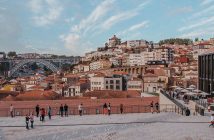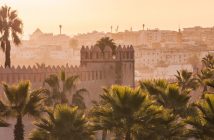The south of Tunisia is a special place. Of course, I am not the first to have noticed this. George Lucas not only made it the location for Star Wars, he dressed Obi Wan Kenobi in the local brown hooded cloak favoured by the local Berbers and made the ancient troglodyte homes here the setting for the place where Anakin Skywalker lived as a boy.
A good choice for another planet, it’s mostly a rocky desert landscape that feels both other-worldly and timeless. Lucas was not, though, looking at the history of the region or reviving a long-lost culture. Many of the local Berber people, also known as Tuareg, still live in the cave dwellings that inspired the village of Mos Espa on Planet Tatooine (aka the nearby modern-day town of Tatouine). They are oddly comfortable structures – cool in the summer, warm in the winter – and built by digging down to create a central pit that forms a courtyard and then sideways into the rock to open up rooms with arched ceilings and white-washed walls.

You can actually stay in the two locations Lucas used, now turned into hotels. You won’t find it too busy, either, as both are currently deserted. Our FCO, as well as many other governments, had until this week deemed Tunisia unsafe to visit leaving the country desperate for the return of tourism. The irony is that the people are welcoming, the country is beautiful and the atmosphere is relaxed (well, maybe a bit too relaxed when it comes to driving). Before the tourists come flooding back, this is a good time to visit. And there’s so much to see. Take, for instance, Kairouan.
The fourth holiest city in Islam, after Mecca, Medina and Jerusalem, Kairouan’s mosque is ancient and venerable but, despite its importance, not restricted and everyone is allowed to enter. It dates back 1400 years and has marble and porphyry columns (some clearly re-used from earlier Roman sites), beautiful plasterwork and an awful lot of carpets. Kairouan is the capital of Tunisia’s carpet industry (excellent bargains to be had) and was indeed the capital of the country in the long-distant past.

The desert, though, is surely the most romantic place for those of us from more temperate climates. Here, there are two deserts – the rocky one around Matmata and Tataouine, and the sandy one in the south, the Sahara. The Berbers grow dates in the oases and there are olive trees widely spaced among the desert rocks, their roots searching deep underground for the sparse resource of water. The sand itself creates “roses”, rosettes of crystal clusters that combine with grains of sand in formations that resemble multiple flower heads.
Once a year, the Berbers hold a festival, Ksour Saharien, with music played on drums, pipes, horns, stringed lutes and flutes. There is dancing (all male), horses and camels. It is a festival of Berber culture centred around the town of Tatouine. And the Berber culture really is quite unique. The language is not related to Arabic and, in fact, the Berbers pre-date the Arabs by some considerable time, having first arrived in the region at least 3000 years ago. Nor do they look Arabic, being paler skinned (albeit tanned by the desert sun). Engage a local in conversation and you’ll find yourself looking into a startling gaze. For a Berber is that rarity, a blue-eyed African.
For more information about Tunisia, including details of destinations and travel ideas, visit the official Tourist Board website at www.discovertunisia.com.




